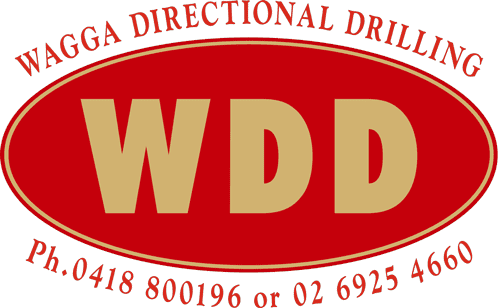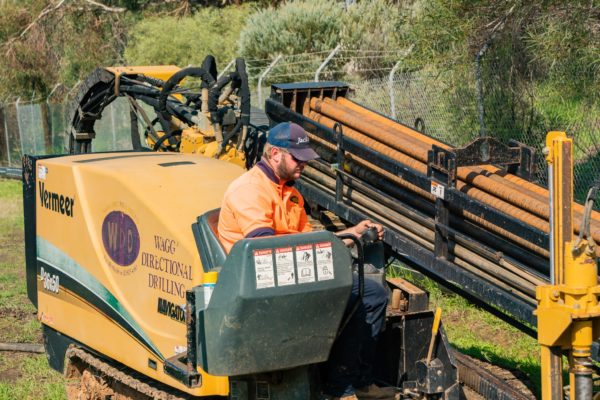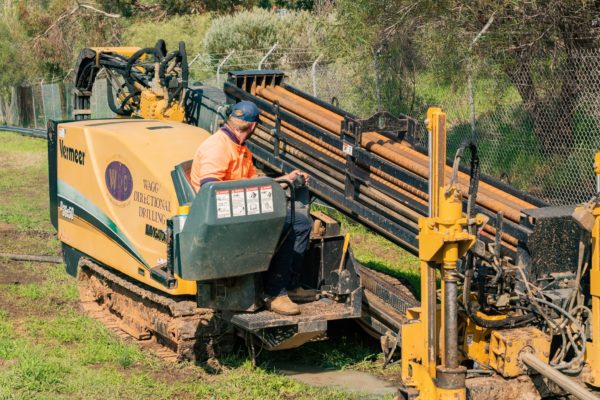Horizontal Directional Drilling is a controllable trenchless method of laying underground pipelines, based on using special drilling machines and rigs. The international name is HDD or Horizontal Directional Drilling. The length of pipeline laying can vary between some meters to some kilometres, and hole diameter can be more than 1200mm. The HDD method uses polyethylene, steel pipes and pipes made of other materials. It’s important to note that the harmful effect influencing on the environment is minimal.
Before work starts, soil properties and its constitution are studied closely, existing underground communications are removed; all necessary work authorisations are received and selective soil probing is made. All the results have a primary meaning for choosing the path and tactics of bore hole laying. Special attention should be devoted to an optimal location of drilling equipment on a building site and ensuring safe working conditions for workers and other people.
Our Equipment
Vermeer 20×22
Vermeer 36×50
The horizontal directional drilling method is comprised of 4 stages:
1. Pilot hole drilling
Drilling a pilot hole is one of the important stages of the work, influencing considerably on the result. It is done with the help of a rock-cutting tool – a front- beveled drilling head with an installed transmitter. The drilling head is fastened to the flexible drive bar by means of a hollow pipe; it allows control in the process of drilling the pilot hole and get round detected underground obstacles in any directions within a usual bend in the extended operating rod. The drilling head has two water ports to feed special drilling fluid that is pumped in a bore hole making suspension with crushed rock. Drilling fluid reduces friction of the drilling head and a drill rod, stabilises the bore hole, cools the rock-cutting tool, washes away the rock and removes the cuttings. The control over the location of the drilling head is exercised by the means of a special receiving gear – locator that receives and handles signals from a transmitter built in the drilling head case. Visual information about position, angle and azimuth of the drilling head is showed on the locator display. The information is also shown on the machine operator’s remote display. The data is extremely important for controlling the path of laying pipeline with the project documentation and minimising the risk of bending the operating rod.
In case of the deviation of the drilling head from the project path a machine operator stops drill rod rotation and corrects the direction of the drilling head. Then the drill rods are pushed without rotation in order to correct the drilling path. The drilling of the pilot hole is completed when the drilling head is at a given exit point according to the project.
The drill rod is a pipe sized of about 60-80mm in diameter and 1-3m long. At the ends of the drill rod are conic outside and inside threaded couplings at different ends of the rod. The drill rods are connected to each other one by one as the drilling head moves. Connected in such a way drill rods look like a flexible rope that is used for cleaning sewerage pipes.
An operator can see a turning angle of the drilling head and its direction on the hand locator display, and if it’s necessary to change the drilling direction he gives a drilling machine operator the order: ‘Stop’, and then ‘Rotate by X degrees’ (but it can be done only in one direction conforming to involvement direction of a drill rod threads) in order to place the drilling head in the right direction and commands: ‘Move the tool on X per cent forward’. After that the drilling head moves forward on X per cent conforming to an operator’s command, then the drilling machine operator starts to pump water or bentonite with the tool rotation. In this way the drilling is carried out on the given path. Water or bentonite is pumped under regulated pressure through the drilling head is at the final point a drilling machine spindle, then through the drill rod reaching the drilling head.
2. Pilot hole enlargement
The bore hole is enlarged when the pilot hole drilling is completed. A back reamer or a reamer is attached to a drill rod instead of the drilling head. The reamer is pulled from the exit end of the tunnel, back to the machine, enlarging the pilot hole to the necessary diameter. To ensure free pulling of pipeline through the enlarged bore hole, its diameter should be by 35-50% more than pipeline diameter. If big diameter is required, the process of enlargement is repeated some times using several reamers of bigger diameters.
3. Pipeline pulling
Engineering and technical personnel turns over operating set of documents to a client, where the actual pipeline position in different planes is stated. It’s obligatory to describe the linkage between the pipeline and landmarks.
There is a pipeline rod prepared for pulling on the opposite from the drilling machine site of the bore hole. A swivel is attached to the reamer at the end of the rod; it prevents the pipeline from rotating. Then the pipeline is attached to the swivel by the means of a special gripping device. In this way the drilling machine pulls the pipeline rod into the bore hole in a project path.
4. Final stage
Engineering and technical personnel turns over operating set of documents to a client, where the actual pipeline position in different planes is stated. It’s obligatory to describe the linkage between the pipeline and landmarks.
Engineering and technical personnel turns over operating set of documents to a client, where the actual pipeline position in different planes is stated. It’s obligatory to describe the linkage between the pipeline and landmarks.
We take pride in our work
To put it simply, we love what we do. To be in a job that allows up to explore new places, meet new people, and work on all types of projects, means that we strive to give our all in every single project we do.
Let's chat
Are you ready to move ahead with your project? Take confidence in knowing that we get the job done right.
HDD Machines
Horizontal Directional Drilling Machines represent complex construction machinery. A typical machine consists of a cradle, a body, bogie (track-type or wheel), a generating unit (diesel engine), a hydraulic aggregate, a drill rod feeder, a drill carriage, and a control panel (an operator’s work place).
Machines are classified by their maximum tractive force measured in tones. Other important characteristics are maximum enlargement diameter and maximum drilling length.
HDD location system
The control over the process of Horizontal Directional Drilling is an extremely important aspect. As the drilling head is invisible during the drilling, the uncontrollable drilling can have unexpected consequences. Therefore during Horizontal Directional Drilling the location systems are used to control the process of drilling. The location system represents a probe attached to the drilling head and a special synchronizing device that is held by a location system operator. The probe registers all information about the angle and the direction of drilling, the rotational speed and drilling head temperature. The information is transmitted to a location system operator during the drilling and helps to avoid aftergrowths.






